 W
WHarriet Chalmers Adams was an American explorer, writer and photographer. She traveled extensively in South America, Asia and the South Pacific in the early 20th century, and published accounts of her journeys in the National Geographic magazine. She lectured frequently on her travels and illustrated her talks with color slides and movies.
 W
WJames "Jimmie" Crawford Angel was an American aviator after whom Angel Falls in Venezuela, the tallest waterfall in the world, is named.
 W
WVäinö Auer, the son of senator Kyösti Auer, was a Finnish geologist and geographer, chiefly remembered as an explorer of Tierra del Fuego and Patagonia. He is also noted for his pioneering studies on tephrochronology, desertification, and the development of bogs.
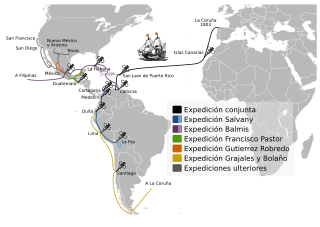 W
WThe Balmis Expedition, officially called the Real Expedición Filantrópica de la Vacuna was a three-year mission, from 1803 to 1806, to Spanish America and Asia led by Dr. Francisco Javier de Balmis with the aim of vaccinating millions against smallpox. Vaccination, a much safer way to prevent smallpox than older methods such as inoculation, had been introduced by the English physician Edward Jenner in 1798.
 W
WJulius Beerbohm was a Victorian travel-writer, engineer and explorer.
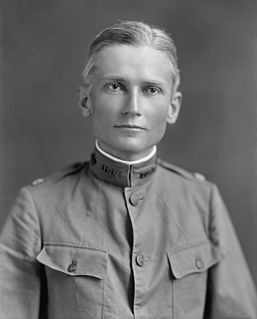 W
WHiram Bingham III was an American academic, explorer and politician. He made public the existence of the Inca citadel of Machu Picchu in 1911 with the guidance of local indigenous farmers. Later, Bingham served as Governor of Connecticut for a single day, and then as a member of the United States Senate.
 W
WBrian Blessed is an English actor, writer, television presenter and singer.
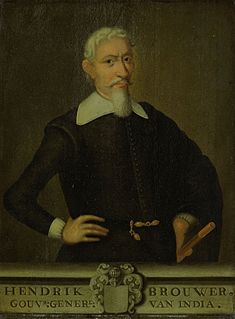 W
WHendrik Brouwer was a Dutch explorer and governor of the Dutch East Indies.
 W
WMencía Calderón (1514-1564?) was a Spanish noble lady, first expeditionary woman in the Río de la Plata.
 W
WFèlix Cardona i Puig was an explorer of the Venezuelan Guyana.
 W
WNicolau Coelho was an expert Portuguese navigator and explorer during the age of discovery. He participated in the discovery of the route to India by Vasco da Gama where he commanded Berrio, the first caravel to return; was captain of a ship in the fleet headed by Pedro Álvares Cabral who landed in Brazil. He died at sea, possibly off the coast of Mozambique, while returning from India in the 5th Portuguese Armada with Francisco de Albuquerque.
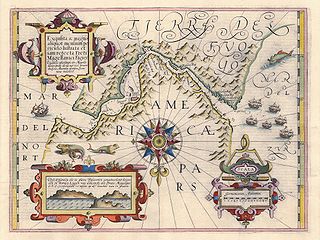 W
WSimon de Cordes was a Dutch merchant and explorer who after the death of Admiral Jacques Mahu, became leader of an expedition with the goal to achieve the Indies, which was replaced for Chile, Peru and other kingdoms. The fleet's original mission was to sail along the west coast of South America, where they would sell their cargo for silver, gold or pearls and to head for Japan only if the first mission failed. In that case, they were supposed to obtain silver in Japan and to buy spices in the Moluccas, before heading back to Europe around Cape of Good Hope. Their goal was to sail through the Strait of Magellan to get to their destiny, which scared many sailors because of the harsh weather conditions. The first major expedition around South America was organized by a voorcompagnie, the Magelhaen Company. It organized two fleets of five and four ships with 750 sailors and soldiers to "devaluate the Spanish". It resulted in utter disaster, 80% of the men died during the journey and the investors made no profit. No full account of the voyage is in existence, but details can be gathered from an unofficial journal kept by Potgieter, a surgeon, letters from William Adams (pilot) and from the facts gleaned by Oliver Van Noort's squadron.
 W
WEarl Lemley Core was a botanist and botanical educator, researcher, and author as well as a local West Virginia historian. He was founder of the Southern Appalachian Botanical Club and editor of its journal, Castanea, for thirty-five years. He was a teacher and professor at West Virginia University (WVU) from 1928 to 1972. He served for four years on the Morgantown City Council, and served as mayor of Morgantown for two years. The Earl L. Core Arboretum at WVU was named in his honor in 1967.
 W
WJules Crevaux was a French doctor, soldier, and explorer. He is known for his multiple explorations into the interior of French Guiana and the Amazon.
 W
WDecades of the New World by Peter Martyr is a series of letters and reports of the early explorations of Central and South America that was published beginning 1511 and later anthologized. Being among the earliest such reports, Decades are of great value in the history of geography and discovery and describe the early contacts of Europeans and Native Americans derived from the narrative of the voyages of Christopher Columbus in the Caribbean and the reports from Hernán Cortés's Mexican expedition.
 W
WJean Baptiste Douville (1794–1837), French traveller, was born at Hambye, in the department of Manche. Having at an early age inherited a fortune, he decided to gratify his taste for foreign travel. According to his own profession he visited India, Kashmir, Khorasan, Persia, Asia Minor and many parts of Europe. In 1826 he went to South America, and in 1827 left Brazil for the Portuguese possessions on the West Coast of Africa, where his presence in March 1828 is proved by the mention made of him in letters of Castello Branco, the governor-general of Luanda.
 W
WJohannes Gijsbert Willem Jacobus (Johan) Eilerts de Haan was a Dutch explorer and soldier. Eilerts de Haan Nature Park in Suriname is named for him.
 W
WCaptain-major Jacques Felix was an explorer and pioneer of Brazil. In 1640 he founded the city of Taubaté in São Paulo.
 W
WMulford Bateman Foster was a botanist known by many as the "Father of the Bromeliad" as he was instrumental in the discovery and introduction of many new species of Bromeliad to the United States. He also devoted his life to hybridizing and contributed widely to the knowledge of the plant species. He was a man of many talents including naturalist, explorer, writer, photographer, artist, horticulturist and a well-respected landscape architect in Florida. Numerous bromeliad plants found today are named after various Foster family members and the genus Fosterella is named in honor of his work.
 W
WJuan María Mundó Freixas was a Spanish explorer and diamond trader.
 W
WFrancisco de Freytas was a Portuguese conquistador, who arrived in the Río de la Plata in the expedition of Pedro de Mendoza. He was chosen alongside other conquistadores to negotiate with the king Charles I of Spain, the supply of arms and provisions of the settlers of Buenos Aires.
 W
WAlberto Vojtěch Frič was a famous Czech botanist, ethnographer, writer and explorer. He undertook 8 voyages to America, discovered, described and catalogued many species of cactus. South American Indians called him Karaí Pukú ; in Europe he became known as Cactus Hunter.
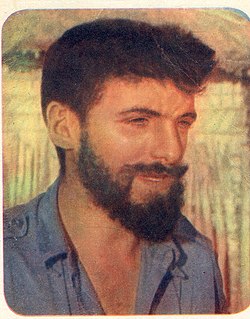 W
WAlain Gheerbrant was a French writer, editor, poet and explorer, noted for his expedition inside the basins of Amazonian rivers.
 W
WChristian Anton Goering was a German naturalist, painter and graphic artist who spent several years in Venezuela.
 W
WVictor Wolfgang von Hagen was an American explorer author, archaeological historian, naturalist and anthropologist who traveled in South America with his wife. Mainly between 1940 and 1965, he published a large number of widely acclaimed books about the ancient people of the Inca, Maya, and Aztecs.
 W
WFriedrich Wilhelm Heinrich Alexander von Humboldt was a Prussian polymath, geographer, naturalist, explorer, and proponent of Romantic philosophy and science. He was the younger brother of the Prussian minister, philosopher, and linguist Wilhelm von Humboldt (1767–1835). Humboldt's quantitative work on botanical geography laid the foundation for the field of biogeography. Humboldt's advocacy of long-term systematic geophysical measurement laid the foundation for modern geomagnetic and meteorological monitoring.
 W
WJuan Gregorio Bazán (1510-1570) was a Spanish military man, who served as Conquistador of Peru and Tucumán.
 W
WAugust Kappler was a German researcher, naturalist and explorer who was a native of Mannheim. He is credited as the founder of Albina, Suriname.
 W
WThe Age of Discovery, also known as the Age of Exploration, was a period in history starting in the early 15th century and continuing into the early 17th century during which Europeans engaged in intensive exploration of the world, establishing direct contacts with Africa, the Americas, Asia and Oceania and mapping the planet. Scientific matters at this time were of little interest as exploration was mostly commercially and politically motivated. Captivated by the lure of gold, silver and spices, Portuguese and Spanish sailors pioneered new trade routes to the Indies.
 W
WCharles Marie de La Condamine was a French explorer, geographer, and mathematician. He spent ten years in present-day Ecuador measuring the length of a degree latitude at the equator and preparing the first map of the Amazon region based on astronomical observations. Furthermore he was a contributor to the Encyclopédie.
 W
WAleksandrs Laime was a famous Latvian-born explorer. He is most noted for being the first recorded human to reach Angel Falls, located in Venezuela, by foot. He also established, together with Charles Baughan, the tourist camp of Canaima, created solely for the purpose of bringing tourists to Angel Falls.
 W
WJacob Le Maire was a Dutch mariner who circumnavigated the earth in 1615 and 1616. The strait between Tierra del Fuego and Isla de los Estados was named the Le Maire Strait in his honor, though not without controversy. It was Le Maire himself who proposed to the council aboard Eendracht that the new passage should be called by his name and the council unanimously agreed with Le Maire. The author or authors of The Relation took Eendracht captain Schouten's side by proclaiming:“ ... our men had each of them three cups of wine in signe of ioy for our good hap ... [and the naming of] the Straights of Le Maire, although by good right it should rather have been called Willem Schouten Straight, after our Masters Name, by whose wise conduction and skill in sayling, the same was found.”.
 W
WAlejandro Malaspina was a Tuscan explorer who spent most of his life as a Spanish naval officer. Under a Spanish royal commission, he undertook a voyage around the world from 1786 to 1788, then, from 1789 to 1794, a scientific expedition throughout the Pacific Ocean, exploring and mapping much of the west coast of the Americas from Cape Horn to the Gulf of Alaska, crossing to Guam and the Philippines, and stopping in New Zealand, Australia, and Tonga.
 W
WGeorg Marcgrave was a German naturalist and astronomer, whose posthumously published Historia Naturalis Brasiliae was a major contribution to early modern science.
 W
WCarl Friedrich Philipp von Martius was a German botanist and explorer.
 W
WFrancisco Pascasio Moreno was a prominent explorer and academic in Argentina, where he is usually referred to as Perito Moreno. Perito Moreno has been credited as one of the most influential figures in the Argentine incorporation of large parts of Patagonia and its subsequent development.
 W
WJohan Nieuhof was a Dutch traveler who wrote about his journeys to Brazil, China and India. The most famous of these was a trip of 2,400 km from Canton to Peking in 1655-1657, which enabled him to become an authoritative Western writer on China. He wrote An embassy from the East-India Company containing the written account of this journey.
 W
WGunther Plüschow was a German aviator, aerial explorer and author from Munich, Bavaria. His feats include the only escape by a German prisoner of war in World War I from Britain back to Germany; he was the first man to explore and film Tierra del Fuego and Patagonia from the air. He was killed on a second aerial expedition to Patagonia in 1931. As an aviator and explorer, he is honored as a hero by the Argentine Air Force to this day.
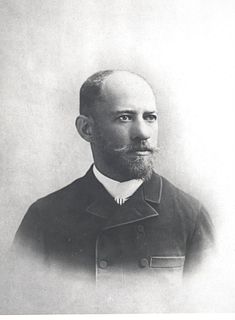 W
WJulius Popper, also known in Spanish as Julio Popper, was a Romanian-Argentine engineer, adventurer, explorer, and genocidaire. He was the designer of the modern outline of the city of Havana, Cuba.
 W
WSir Walter Raleigh , also spelled Ralegh, was an English landed gentleman, writer, poet, soldier, politician, courtier, spy and explorer. He was a cousin of Sir Richard Grenville and younger half-brother of Sir Humphrey Gilbert. He is also well known for popularising tobacco in England. Raleigh was one of the most notable figures of the Elizabethan era.
 W
WJohan Reinhard is an Explorer-in-Residence at the National Geographic Society. He is also a senior research fellow at The Mountain Institute, a visiting professor at Catholic University, Salta, Argentina, an honorary professor of Catholic University, Arequipa, Peru, and a research professor at Future Generations University.
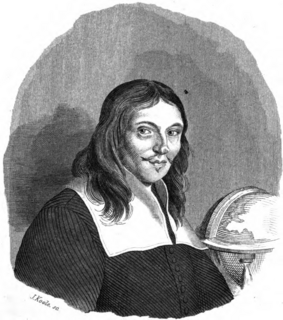 W
WJacob Roggeveen was a Dutch explorer who was sent to find Terra Australis, but instead found Easter Island. Jacob Roggeveen also found Bora Bora and Maupiti of the Society Islands, as well as Samoa. He planned the expedition along with his brother Jan Roggeveen, who stayed in the Netherlands.
 W
WErnest Rouquaud (1822-1907) was a French trader, settler and colonizer of the Patagonia Argentina. In 1871 he obtained the concession of the Argentine Government in to found a colony in Santa Cruz Province.
 W
WBartolomé Ruiz was a Spanish conquistador. He started his career as Christopher Columbus's pilot, before joining Francisco Pizarro and Diego de Almagro on their conquest of Peru. Ruiz was a member of the Famous Thirteen. He is also the first European to see Ecuador, and the first to land and begin European exploration there.
 W
WTibor Sekelj, also known as Székely Tibor according to Hungarian orthography, was a Hungarian born polyglot, explorer, author, and 'citizen of the world.' In 1986 he was elected a member of the Academy of Esperanto and an honorary member of the World Esperanto Association. Among his novels, travel books and essays, his novella Kumeŭaŭa, la filo de la ĝangalo, a children's book about the life of Brazilian Indians, was translated into seventeen languages, and in 1987 it was voted best Children's book in Japan. In 2011 European Esperanto Union declared 2012 "The Year of Tibor Sekelj" to honor the 100-year anniversary of his birth.
 W
WMirko Seljan and Stjepan Seljan were Croatian explorers.
 W
WFriedrich Wilhelm Sievers was a German geologist and geographer. He served as professor of geography at the University of Giessen. His field work focussed on South America, and his Allgemeine Länderkunde was for several decades a standard work on world geography.
 W
WAmerigo Vespucci was an Italian merchant, explorer, and navigator from the Republic of Florence, from whose name the term "America" is derived.
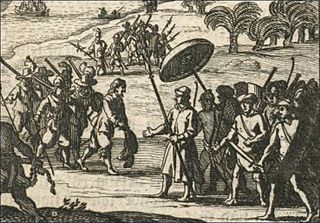 W
WSebald or Sebalt de Weert was a Flemish captain and vice-admiral of the Dutch East India Company. He is most widely remembered for accurately plotting the Falkland Islands in 1600.
 W
WPrince Alexander Philipp Maximilian zu Wied-Neuwied was a German explorer, ethnologist and naturalist. He led a pioneering expedition to southeast Brazil between 1815–1817, from which the album Reise nach Brasilien, which first revealed to Europe real images of Brazilian Indians, was the ultimate result. It was translated into several languages and recognized as one of the greatest contributions to the knowledge of Brazil at the beginning of the nineteenth century. In 1832 he embarked on another expedition, this time to United States, together with the Swiss painter Karl Bodmer.